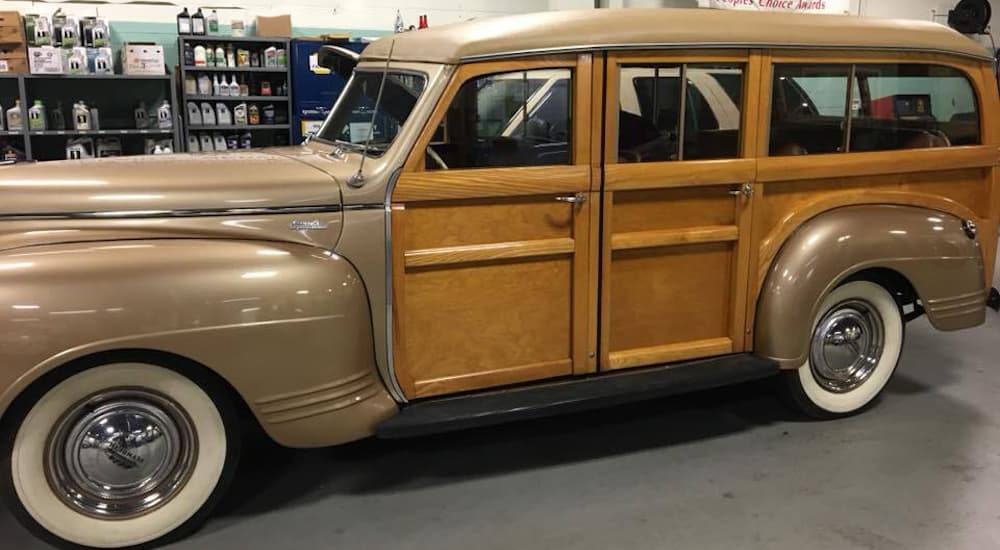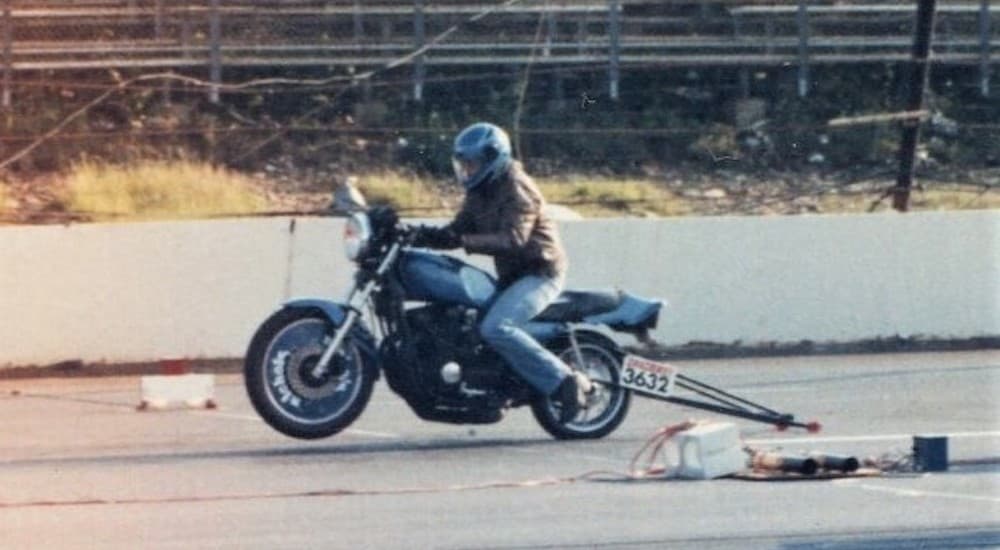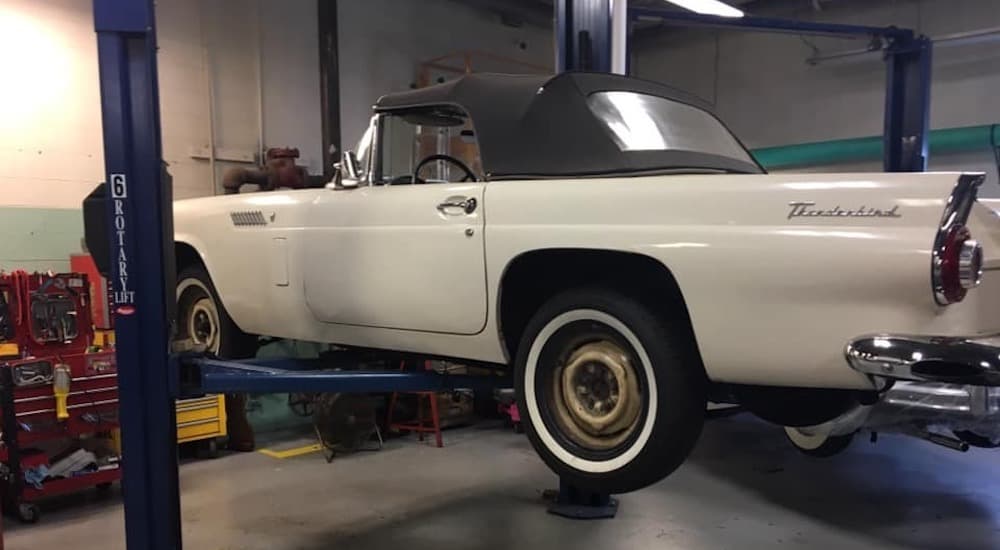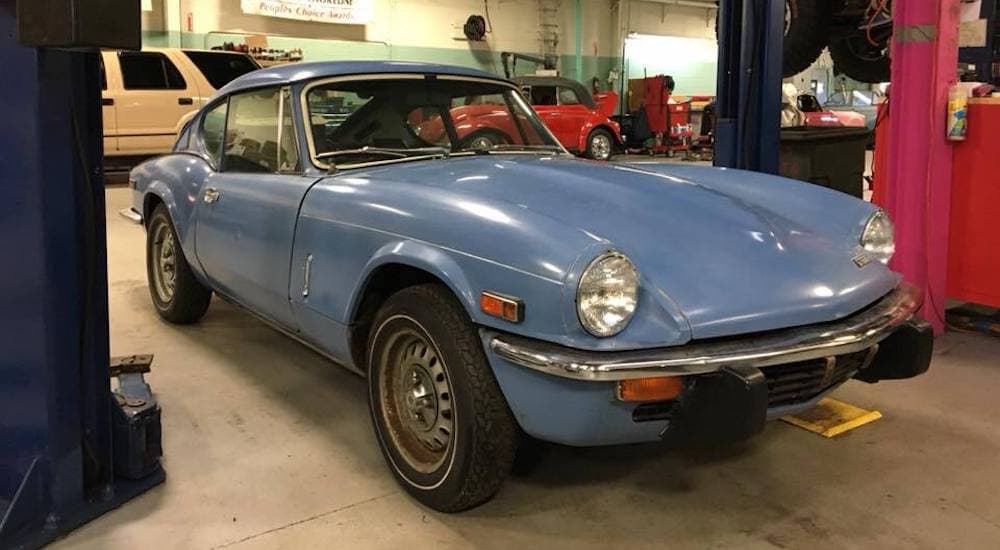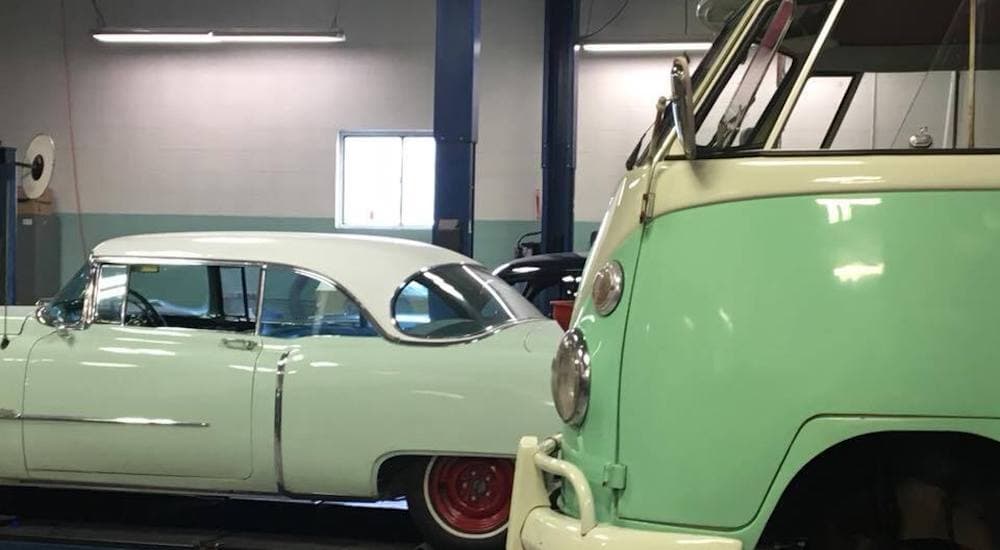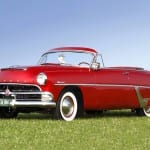There are not many people out there who can say they have worked on everything from a 1920s Duesenberg to a modern tube chassis race car – but Sherman has. In the automotive world, technology marches on. Every year, we see vehicles updated, refreshed, redesigned, or replaced to meet the changing demands of drivers around the country. As new model years get introduced, the majority of the outdated cars find themselves sent to the scrapyard and forgotten. But some people spend their lives keeping obsolete cars running for the small number of drivers who appreciate owning a piece of history.
Sherman is one of those rare mechanics who has not just worked on a handful of classic cars but has spent his career fixing and modifying cars from across the entire span of automotive history. His father was an SCCA worker back in the 1960s, so he grew up running around the pits. Sherman says that he had done three things his whole life – “classic cars, auto machine work, and motorcycles.” When it came to classic cars, mechanical restoration and engine work were his specialties, working on everything from a 1904 Pope Hartford to Ferraris. Now retired, Sherman continues to build and race his own cars in local events.
This incredible career has given him some unique insights into how cars have changed over the years, and Sherman was more than happy to share some of his knowledge and opinions with the team here at Auto Influence. From learning about the best and worst classic cars he has seen to getting his opinions on fuel injection and Ferrari craftsmanship, we enjoyed every minute of our chat with him.
What Makes a Classic?
When someone says the words “classic car,” you probably have a particular image in your mind – but whether that image is a Ford Model A, a 1960s Chevy Camaro, or a 1980s Toyota Land Cruiser will depend a lot on how old you are. According to Sherman, classic cars are primarily a product of nostalgia. For most people, “the car that you want, either your sister’s boyfriend had or your older brother had.” For the younger generation, however, it was often the Fast and Furious movies or video games that introduced them to their dream car, and those JDM (Japanese Domestic Market) imports are now commanding high prices at classic car auctions.
The shifting “nostalgia range” means the classic car market is always evolving, and Sherman pointed out that many beautiful Brass Era cars are now selling for far less than they were worth not so long ago as the generation that looks back on them with nostalgia ages out of buying and driving old cars. One side effect of the declining popularity of older cars is that a lot of experience is being lost, and experts like Sherman who can keep a hand-built car running are becoming harder to find.
Sherman says the classic car world runs on nostalgia, but what it takes to scratch that itch means different things to different people. Some drivers just want an affordable car they can take out on the weekends now and then, while others want perfectly restored machines with all matching numbers that they can show off and use as an investment. There is even a huge vintage racing scene where drivers take their old cars out on road courses or compete at the drag strip. Some of those drivers will even eschew historical accuracy and rebuild their old cars with loads of modern technology for a competitive edge.
Changes and Improvements
Perhaps the most surprising part of our chat with Sherman was his firm denial that old cars were in any way better than modern cars. On the surface, this makes sense – technology improves with time, after all. But many classic car enthusiasts still insist that “they don’t make them like they used to.” Perhaps because his experience has been so much broader than most car enthusiasts, Sherman flat out disagrees: “Cars are so much better than they were 10 years, 20 years ago.”
When Sherman started working at his first machine shop in 1976, his main job was rebuilding motors with only 60,000 miles on them. Nowadays, you routinely see motors hit 400,000 miles without anything more than maybe a new head gasket. Why? Computers.
“The biggest thing you can do is get rid of the carburetor.” That upfront statement was followed by a detailed explanation of just how much fuel injection technology has improved cars. Not only did Sherman point out that computer-controlled fuel injection means “motors are a heck of a lot more efficient now,” but he explained how carburetors dumping fuel into the engine used to lead to oil dilution and worn-out engines. “A carburetor doesn’t know if a car is warmed up, if it’s cold, what it needs, it’s just dumping gas.”
But computers don’t just increase efficiency and reliability – they also massively improve power. When Sherman was working in a shop that focused on performance upgrades, he was taking engines that originally produced around 350 horsepower and rebuilt them to churn out nearly 600 horsepower. And it wasn’t just the engines – even things as simple as brake pads have improved vastly over the past decades. “We know a lot more now than we did in 1964.”
Working On Classic Cars
While improvements in automotive technology have vastly improved performance and reliability, when it comes to working on classic cars, things aren’t so clear-cut. Sherman says that “1950s American cars are relatively easy to work on” because you can “usually just look at things and figure them out.” But on either side of that window, things get complicated.
While older cars are mechanically simpler than cars from the 1950s and 1960s, they aren’t as standardized. Back then, every manufacturer was still figuring out how to build a good car, and everyone was doing things a little differently. Sherman worked in one shop that specializes in Packards, but the skills for those engines don’t directly translate to other engines from the same era. By the 1950s, though, everyone was copying each other and had some fairly standardized designs.
Another challenge of working with the very early cars is that they weren’t built with the same mindset of having easily replaceable parts. In the old days, “everyone attempted to take apart their own engine,” and if something broke, you rebuilt it yourself with the tools and materials you had on hand. You couldn’t go down to Napa for a new water pump for your Model A, but every part in there was rebuildable.
Of course, that can cause issues for future owners down the line. Sherman has had times when the diagrams in the manual didn’t match what was in the car because of home repairs over the years. In one instance, a previous owner had even fabricated his own bushings back in the 1940s and drilled out the transmission to match. Interestingly, this is another area where modern technology has come to the rescue. “With 3D printers and CNC machines, it is getting really easy to make the parts you need to keep your old cars on the road.”
Fast forward to the newer cars, and things get complicated again. Part of the reason why computers made cars far more capable is because they allowed the engineers to start experimenting with things again. Much like with early cars, “nowadays, if you put a Chevy motor and Ford motor side by side, they are not going to look anything alike.” And of course, the computers in the car also require their own special tools, making it more complicated to work on them.
The Best and Worst
When we asked Sherman what his favorite was out of all the classic cars he has worked on, the answer was not what we were expecting. Rather than something more modern, or perhaps a car from the golden era of American muscle, his all-time favorite was a hand-built Duesenberg from before the Great Depression. According to him, it was the one car that he felt truly honored to drive. Every detail had been designed to be as perfect as possible, from the straight-8 engine to the individual chrome nuts. Even the firewall hidden under the hood was beautifully decorated aluminum. Despite its age, “the door shut like a vault, and it could keep up with modern traffic.” The only flaw that Sherman could find with that car was that first gear wasn’t synchronized.
Another classic car that Sherman remembers fondly was a 1940 Ford. It was a base model with 40,000 original miles on it, but the original paint was still black and shiny. “It started beautifully and drove beautifully,” only needing some basic maintenance to get back on the road. While that car may have been nothing particularly special when it was built, it had been cared for over its life and remained an amazing example of a classic car.
However, Sherman was clear that classics like the Duesenberg and the 1940 Ford were rarities. Over his career, he saw countless cars in bad condition that the owners needed to spend huge sums of money restoring. The worst were VW buses, and he and his coworkers always suspected the worst when one rolled into the shop. While good condition examples now command a high price at auction, most VW buses were not well cared for over their lives and now have all sorts of problems.
One type of classic car that you might not expect to be a bit of a disaster were Ferraris – not because they were badly maintained, but because they were “hand built in Italian.” Sherman talked about one 250 Lusso that he saw after the owner had damaged it by clipping a guard rail. The shop made a replacement fender from scratch only to discover that the left and right sides of the car were three-quarters of an inch off. While some hand-built cars can be exceptional, overall, modern machine-built cars are of much higher quality.
Getting Into Classic Cars
Even if the definition has shifted over the years, classic cars remain a popular hobby. Cars are a central part of modern life, and nearly everyone has a model they dreamed about as a teenager or young adult that they couldn’t afford at the time. The classic car scene lets you live out your nostalgia and relive a time when things were simpler.
If you are looking to jump into the world of classic cars, Sherman says that you have to start by being realistic about your expectations. Figure out what you can afford and why you are buying it – do you want something to play with on the weekends, or will you only be satisfied with a very particular model? Buying a car is always the cheapest option, and restoring a car takes time and money that you will almost certainly never get back. However, if you have the skills, there are models that make good project cars – Sherman highly recommends Mustangs for the easy parts availability.
After you have found a car that you want, his number one tip is to find an expert and get it inspected. There are a lot of classic cars out there that are “half-filled with Bondo and are nothing but problems,” and paying an expert to look it over before you buy it can save you a lot of time and money in the long run. Once you have the car, remember that classic cars and modern cars are not built to the same standards, and be sure to keep up with maintenance rather than running it into the ground.
The Evolution of Cars
It isn’t often that you get to talk to someone with Sherman’s experience, and his stories opened a window into a part of the automotive world that many people will never encounter. But while you might see classic cars as nothing more than an oddity that you occasionally pass during your commute to work, your new car, truck, or SUV is the direct product of over a century of development. From the early hand-built cars, through the Brass Era and the golden age of muscle cars, to the more recent JDM cars, classic cars are an amazing way to experience the advancement of technology and, perhaps, relive a bit of your own youth in the process.

